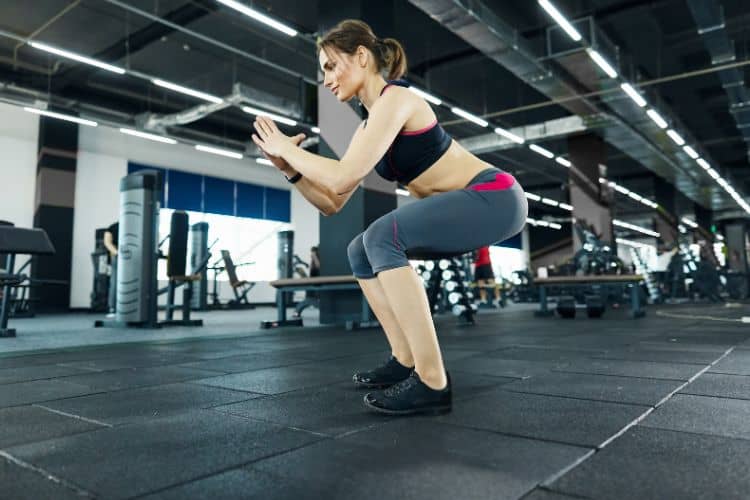35 Minute Full Body Functional Strength Workout for Total Fitness
Functional strength training isn’t just about looking good—it’s about building the power, coordination, and mobility to move better in everyday life. Unlike traditional workouts that isolate muscles, functional training focuses on multi-joint movements that mimic real-life activities, improving your ability to push, pull, squat, lift, and rotate efficiently. A 35-minute full body functional strength workout is the perfect solution for anyone looking to get stronger, improve performance, and enhance overall fitness without spending hours in the gym. This workout blends strength, balance, core engagement, and endurance into one efficient session, making it ideal for both beginners and experienced lifters.
Benefits of a Functional Strength Workout
Before we jump into the workout, let’s explore why functional strength training is one of the most effective approaches for total body fitness.
1. Builds Real-World Strength
Functional movements—such as squats, deadlifts, and carries—train your body to handle real-life tasks like carrying groceries, climbing stairs, or lifting heavy objects.
2. Improves Balance and Stability
By engaging multiple muscle groups and incorporating unilateral (single-side) exercises, functional workouts challenge your stabilizing muscles, helping to reduce the risk of falls and injuries.
3. Enhances Mobility and Flexibility
Functional training includes dynamic movements that improve joint range of motion and keep your body moving fluidly.
4. Boosts Calorie Burn
Because you’re engaging multiple muscle groups at once, functional workouts elevate your heart rate and burn more calories compared to isolation exercises.
5. Supports Core Strength
Every functional move recruits your core muscles, improving posture and reducing lower back pain.
Equipment Needed for This 35-Minute Functional Strength Workout
You can complete this workout at the gym or at home with minimal equipment. Here’s what you’ll need:
- Dumbbells (medium weight, adjust as needed)
- Kettlebell (optional for swings and carries)
- Resistance bands (optional for added challenge)
- Mat for floor exercises
- Timer or stopwatch
Workout Structure Functional Strength
- Total Time: 35 minutes
- Format: Circuit training (functional movements)
- Intervals: 45 seconds work, 15 seconds rest per exercise
- Rounds: 3 rounds (with 60–90 seconds rest between rounds)
This structure keeps your heart rate elevated while building strength and stability through full-body movements.
Warm-Up (5 Minutes)
Never skip your warm-up—preparing your muscles and joints is crucial for injury prevention and performance.
Dynamic Warm-Up Exercises:
- Arm Circles – 30 seconds forward, 30 seconds backward
- Hip Circles – 30 seconds each direction
- Bodyweight Squats – 1 minute
- Lunge with Torso Twist – 30 seconds each side
- High Knees or Marching in Place – 1 minute
The 35-Minute Full Body Functional Strength Workout
Below is the workout plan. Perform each exercise for 45 seconds, rest for 15 seconds, then move to the next. Complete all exercises to finish one round, rest for 60–90 seconds, then repeat for 3 total rounds.
Lower Body Functional Strength Exercises
1. Dumbbell Squat to Press
- Muscles Worked: Quads, glutes, shoulders, core
- How to Do It: Hold dumbbells at shoulder height, squat down keeping your chest up, then push through your heels and press the weights overhead in one fluid motion.
- Why It’s Functional: Combines a lower body squat with an upper body press, mimicking real-life lifting movements.
2. Reverse Lunge with Knee Drive
- Muscles Worked: Quads, hamstrings, glutes, core
- How to Do It: Step back into a lunge, then drive your back knee up toward your chest as you stand. Alternate legs.
- Why It’s Functional: Builds unilateral strength and balance for walking, climbing, and running.
Upper Body Functional Strength Workout Exercises
3. Renegade Row
- Muscles Worked: Back, shoulders, arms, core
- How to Do It: In a plank position with hands gripping dumbbells, row one weight toward your ribcage while keeping your hips square, then switch sides.
- Why It’s Functional: Strengthens pulling muscles while engaging the core for stability.
4. Push-Up with Shoulder Tap
- Muscles Worked: Chest, triceps, shoulders, core
- How to Do It: Perform a push-up, then tap your right hand to your left shoulder and alternate.
- Why It’s Functional: Enhances pressing strength while challenging balance.
Core and Stability Functional Strength Exercises
5. Plank to Dumbbell Drag
- Muscles Worked: Core, shoulders, lats, obliques
- How to Do It: In a plank position, drag a dumbbell from one side to the other using one hand while keeping hips level.
- Why It’s Functional: Improves anti-rotation strength essential for sports and daily movement.
6. Dead Bug with Dumbbell Press
- Muscles Worked: Core, chest, shoulders
- How to Do It: Lying on your back with arms extended holding a dumbbell, lower opposite arm and leg toward the floor while keeping your back flat, then return and switch sides.
- Why It’s Functional: Builds deep core stability and shoulder endurance.
Full-Body Power Functional Strength Workout Exercises
7. Kettlebell Swing
- Muscles Worked: Glutes, hamstrings, core, shoulders
- How to Do It: Hinge at the hips, swing the kettlebell between your legs, and explosively drive it forward to shoulder height.
- Why It’s Functional: Develops hip power, which is key for lifting, sprinting, and jumping.
8. Farmer’s Carry
- Muscles Worked: Grip, forearms, shoulders, core, legs
- How to Do It: Hold heavy dumbbells or kettlebells at your sides and walk for the duration of the interval.
- Why It’s Functional: Mimics carrying groceries or luggage while improving grip and postural strength.
Cool-Down & Stretching (5 Minutes)
End your session with a cool-down to help muscles recover and prevent stiffness.
Static Stretches:
- Standing Quad Stretch – 30 seconds per leg
- Seated Hamstring Stretch – 30 seconds per leg
- Chest Opener Stretch – 30 seconds
- Child’s Pose – 1 minute
- Cat-Cow Stretch – 1 minute
Tips for Maximizing Functional Strength Workout Results
- Choose the Right Weight: Pick a weight that challenges you for the last 5 seconds of each interval without compromising form.
- Focus on Form First: Quality over quantity—proper technique prevents injuries.
- Engage Your Core: Keep your abs tight throughout to protect your lower back.
- Progress Over Time: Increase weights, extend intervals, or reduce rest periods to keep improving.
- Consistency is Key: Aim for 2–3 sessions per week alongside other forms of training.
Who Can Do Functional Strength Workout?
This workout is adaptable for all fitness levels:
- Beginners: Use lighter weights or bodyweight only and extend rest time.
- Intermediate: Stick to recommended timing and weights.
- Advanced: Increase load, shorten rests, or add extra rounds for a greater challenge.
A 35-minute full body functional strength workout is a time-efficient, effective way to improve strength, balance, mobility, and endurance all at once. By focusing on multi-joint, real-life movements, you not only get fitter but also move better in daily life.
Incorporate this routine 2–3 times per week, pair it with proper nutrition, and watch your strength and fitness skyrocket. Functional training isn’t just exercise—it’s an investment in long-term health and performance.
Want more workout and video guide?
Follow us on Pinterest, Facebook, and Subscribe to our Newsletter and Stay tuned for FREE downloads of our App coming soon!
Most Recommended





